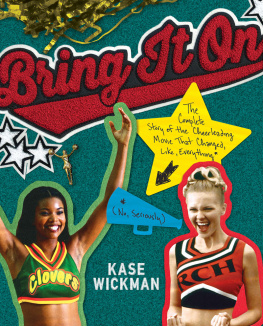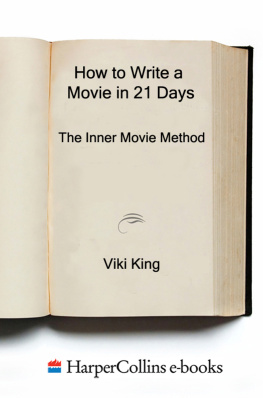Acknowledgments
The performances of Barbra Streisand, Robert Redford, and James Woods in The Way We Were continue to entertain and inspire, and I am indebted to them for the interviews they granted me for this book. Fortunately, they were not the only generous storytellers who spoke to me, whether those interviews were face-to-face or conducted by phone or email. I am also indebted to Don Bachardy, Alan Bergman, Andr Bishop, Michael Britton, Barry Brown, John F. Burnett, Mary Corliss, Grover Dale, Marty Erlichman, Ashley Feinstein, Dave Fiske, Jesse Green, Hawk Koch, Hal Luftig, Patti LuPone, Kevin McCollum, Patrick McGilligan, William Mann, Rachel Pollack, Rebecca Pollack, Judith Rascoe, Lynne S. Rayfiel, Michael Riedel, Zvi Howard Rosenman, Richard N. Roth, Scott Rudin, Harry Seibert, Art Smith Jr., David Stone, David Strick, Matt Tyrnauer, John Weidman, Victoria Wilson, and a couple of anonymous sources. Not everyone listed here is quoted in the book, but even if their names do not appear in the text, they provided invaluable information.
Dave Fiske and Becky Ford were especially helpful in reconstructing the Way We Were shoot in Ballston Spa, New York. Matt Howe, who edits the Barbra Archives website, never failed to provide speedy and accurate answers to my many queries. And a very special thank-you goes out to Lynne S. Rayfiel, who gave me not only photographs but also copies of David Rayfiels rewrites of The Way We Were .
My friends Gay Haubner and Laurence Sutter read an early draft of this book and offered wonderful suggestions. Nick Buchholz, Justin Ross Cohen, Howard Mandelbaum, Christine Pittel, and Philip Rinaldi made introductions to interviewees, who were essential to the writing of this book.
Im proud to pay the taxes that support libraries throughout the country. Nonfiction books dont get written without the enormous help of librarians. With this book especially, I relied mightily on those librarians at the Cornell University Library, the Library of Congress, the New York Public Library for the Performing Arts at Lincoln Center, the Margaret Herrick Library, and the New York Public Librarys Stephen A. Schwarzman Building.
Last and foremost, I thank my photographer friend Jill Krementz; my agent, Lee Sobel; and all the talented people at Kensington Publishing, including designers Andrew Elias and Kristine Nobel, copy editor Rosemary Silva, and, of course, my editor, John Scognamiglio.
Epilogue
The Reporter and His Subjects
I n my work as an entertainment journalist, I met and interviewed Sydney Pollack, Arthur Laurents, and Tom Hatcher.
In 1995 I wrote weekly columns on the movies for the Reuters news agency and the Miami Herald . Those two gigs forced me to clock in several interviews a week . Pollack, at the time, was doing press duties for his new film, Sabrina , and it was clear from his press conference that he didnt think much of the movie remake, based on the Billy Wilder classic starring Audrey Hepburn and Humphrey Bogart. Id heard a rumor that Pollack had recently shown Wilder his Sabrina remake. Naturally, I brought it up during our one-on-one interview, asking, So what did Billy Wilder think of your version?
Pollack shook his head. What could he say? He had to be nice. Its very difficult, he said. Billy did tell me before the screening, Someday someone will do this to you. They will do a remake of The Way We Were .
It was a segue dropped straight from heaven! That day, Pollack much preferred talking about The Way We Were to talking about his Sabrina , and I jumped at the opportunity to ask about all the Hollywood blacklist scenes that had been cut. That was when he told me, There will not be an extended directors cut of The Way We Were . The blacklist scenes dont work.
When I asked about a recently published Streisand biography that contended she would have won the Oscar if the UCLA scene had not been cut, he responded with the utmost firmness, Thats bullshit!
I left that interview knowing that Pollack preferred The Way We Were to remain as he had last edited it in 1973, and that he wanted no changes made. He wanted no cut scenes reinserted. I found the man to be as honest and forthright as any person Ive ever met in the film business.
I often interviewed Arthur Laurents when I was the theater reporter for Variety , from 1999 to 2005. At the time, I was also working on a biography of the agent Henry Willson, to be titled The Man Who Invented Rock Hudson . Since Laurents had lived and worked in Hollywood in the late 1940s and early 1950s, I hoped that his path there might have crossed with Willsons.
Laurents was quick to reply. No, I didnt know him. But I know someone who did. Call Tom Hatcher, he said, and he gave me the phone number. At times like this, Laurents could be a reporters dream. He also never failed to give great quotes. It was not until I had prepared for the interview, quickly skimming Original Story By , that I learned the identity of Laurentss longtime partner at 9 St. Lukes Place. Years before, Id worked for an editor in chief who lived next door to Arthur Laurents, the guy who wrote West Side Story , and his boyfriend. This magazine editor spoke disparagingly of his two next-door neighbors, because he believed they had poisoned one of his cats that often wandered into their garden.
The day of the Henry Willson interview, Laurents answered the door of the historic brownstone and immediately introduced me to Hatcher, who stood behind him. Both men were nearly identical in height, about five feet six or seven. Hatcher then invited me to his sparsely decorated ground-floor office, which led to a lush garden, the possible crime scene regarding my editor in chiefs pet cat.
Having just read Original Story By , I recognized an old photograph from the book on one of the shelves in Hatchers office. Taken in the mid-1950s, it shows Laurents and his boyfriend posed on a diving board as they are about to fall or jump into a swimming pool. Despite the twelve-year age difference, Laurents is every bit as buff as his younger partner; in fact, in their tight matching swim trunks, the two mens small yet compact bodies are nearly interchangeable. They were both amazing male specimens in an age when there werent gyms on every other block of Los Angeles and New York City.
Before I could turn on my tape recorder, Hatcher informed me, I renovate houses. Thats what I do. He then turned himself into a veritable quote machine. After a couple of warm-up questions, he immediately launched into an anecdote regarding how Willson had fired him as a client and, on the same night, made an offer that the teenage John Saxon, a recent Brooklyn migr, could not refuse.
It was a short but productive interview. Hatcher didnt have much contact with Willson beyond his signing him and then his firing him. In between those two events, the young actor did find himself questioned and harassed by the police for having attended a Willson pool party one Saturday afternoon.
Laurents and Hatchers housekeeper soon made an appearance to invite me to lunch, and sitting down across from the couple in an elegant dining room on the parlor floor, as overloaded with paintings and memorabilia as the office downstairs was devoid of them, I had to wonder if this was the first time a reporter had come to this house to interview Hatcher and not Laurents. From there, it was clear who held court at 9 St. Lukes Place. Laurents wasted no time dropping the name Paul Newman, whom, he informed us, had just turned down the offer to perform in one of his plays. I assume it was Two Lives . Paul told me he had tried to learn the first page of the play, and had spent all day trying and couldnt even remember a paragraph, much less a page, said Laurents. Newman would soon end his career in the theater in a Broadway production of Thornton Wilders classic Our Town , in which he essayed the role of the Stage Manager, a character that carries, and sometimes reads from, the script.









